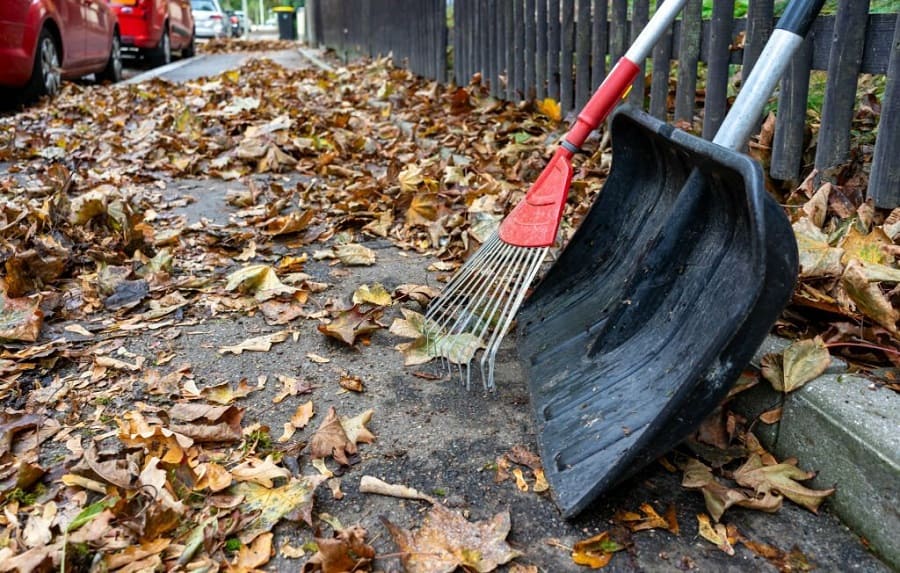Why Do We Need to Clean Up Leaves?
POSTED ON December 8, 2023 BY Galena Lawn Care
It is important to clean up your lawn as it helps to give a neat and well-kept look apart from maintaining the overall health of the garden or yard.
Understand the importance of clearing leaves from your lawn. Know why it is necessary
Maintains grass health: When leaves collect on a lawn, they obstruct the sunlight required for plant growth and deprive the region of vital oxygen. By removing the leaves, you are promoting the health and well-being of the grass all year.
Frees trapped moisture: Proper leaf disposal lets moisture escape from the grass, limiting the formation of harmful fungus and mildew. Fungi can also infect nearby plants and bushes.
Reduces bug infestations: Bugs flourish in cold, dark, damp environments, such as beneath heaps of wet leaves. Cleaning up leaves eliminates a popular habitat for these harmful parasites.
Reduces thatch accumulation: When you remove fallen leaves, you are also removing thatch. This layer of live and dead organic debris can build up around grass plant roots. Thatch can cause grass crowns to rise, making them more vulnerable to scalping.
Increases safety: Wet heaps of leaves on pathways and sidewalks can cause slipping and falling. By eliminating them, you make your property safer for pedestrians while also lowering your liability risk.
Look at the environmental impact of leaves on a lawn
The removal of leaves also destroys crucial animal habitats. Leaf litter is used by animals ranging from turtles and toads to birds, mammals, and invertebrates for food, shelter, and nesting material. Many caterpillars, moths and butterflies spend the winter among fallen leaves before emerging in the spring.
Turning leaves into solid garbage is useful for gardeners. Fallen leaves serve two purposes. As the leaves decompose, they produce a natural mulch that suppresses weeds and fertilizes the soil. Why pay for mulch or fertilizer when you can produce your own?
Examine how removing fallen leaves can promote healthier grass growth
Fallen leaves are not normally an issue for lawns and gardens, and mulching the ground with them helps to nourish the soil for a healthier yard.
Why? Because falling leaves enrich your soil with a variety of nutrients. Phosphorus and potassium are only two of the elements that are beneficial to your grass. These leaves also help to strengthen the soil structure and increase its water absorption. And we’ve all heard about how helpful earthworms are to our gardens. It just so happens that one of their favorite snacks is leaf litter. With reasons like these, why waste leaves or donate them to your community?
Learn the best techniques for leaf removal – rake, mow, or blow away leaves for a tidier garden
What is your approach to leaf removal? Is it better to do a little cleaning every weekend or one large leaf load at the end of the season?
Blow them away: Using a leaf blower is the quickest and easiest way to remove leaves. High-powered blowers are often too heavy and perhaps unsafe for a youngster to operate. So, weigh the benefits and drawbacks before buying yourself a chore. Of course, leaf-blowing is only suited for residences with a leaf-blowing space. The yard of a neighbor does not count!
Set up a tarp: Rake or blow all your leaves onto a huge tarp that has been set up on the grass. If you are just removing leaves, this strategy might not be the best. If you work with a partner or a team (this is also a kid-friendly duty), it is simple to grab a side of the tarp and transfer the waste to the woods or other designated “dumping area.”
Discover useful tips and tricks for disposing of leaves in an eco-friendly way
“Leaf Cycling” is an Eco-Friendly Method of Yard Maintenance. Many individuals find high-quality fertilizer in their yard and just rake it up and discard it in the garbage.
The disposal of raked leaves in a landfill has long-term consequences for a community. Even recycling green waste through community collection, while less difficult than tossing it away, is not the easiest or most cost-effective method to use this horticultural resource.
Find out how you can use the leaves collected to create natural garden compost or mulch
Did you know that fallen leaves may be used in the garden? These leaves may be turned into compost. Although the leaves are poor in important plant nutrients such as nitrogen, they do contain trace levels of all the elements plants require and are a great source of soil-improving organic matter.
Begin by cutting the leaves into smaller pieces and adding them to the pile. If you have a chipper or a shredder, you can utilize it. Otherwise, run your lawn mower over them and put them into your compost pile. If you have a lot of leaves, you may keep them in waste bags or containers after shredding them, then occasionally layer them onto your compost pile during the winter to add air.
Leaf Removal Services Galena, Ohio
The most common period during which the leaves are removed starts from August to December. If you are looking for a leaf removal service in Galena Ohio, you will discover that prices vary based on the size of the lawn and the depth of the leaves.
While the frequency with which you should mow your lawn varies by property, it is always advisable to maintain your grass regularly. Too much time between cuts might shock the plant, resulting in an unhealthy lawn or bald areas. Weekly or bi-weekly mowing services are advised at Galena to keep a lush, healthy lawn that your neighbors will envy!